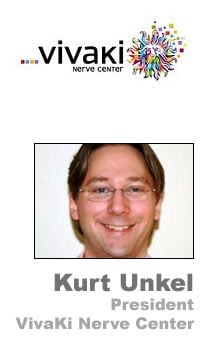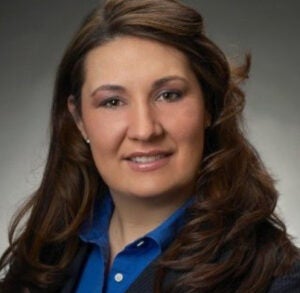 Vivaki’s Nerve Center may have been the brainchild of Curt Hecht, but Kurt Unkel has done as much as anyone to help make it a reality. Unkel, who has worked for Hecht for more than a decade, will now run Publicis’s automated media buying unit as president in the wake of his boss’s departure for The Weather Channel.
Vivaki’s Nerve Center may have been the brainchild of Curt Hecht, but Kurt Unkel has done as much as anyone to help make it a reality. Unkel, who has worked for Hecht for more than a decade, will now run Publicis’s automated media buying unit as president in the wake of his boss’s departure for The Weather Channel.
In a chat with AdExchanger this afternoon, Unkel talked about the past and future of the Nerve Center, covering a range of topics including the rapid growth of in-stream video audience buying, the challenges of social and mobile data, and Publicis agency account teams’ feelings about the trading desk model.
AdExchanger: What is Curt Hecht’s legacy at the Nerve Center, and what should we expect from you as president?
KU: Since he’s the original architect, everything has his fingerprints all over it. I’ve been working for Curt for 11 years.
[Today’s VNC] is almost the third iteration of a concept and to see it scale and go off the way that it has the past four years has been a really fun ride. Scaling the idea, getting a foundation in place, that’s what his legacy will be. At a more macro level the overall group is in a much better place as it relates to digital talent, focus on the right strategies, something that’s articulated externally and a lot of deeper relationships with some of our partners. Those are key areas that I think he’ll leave behind that we’re going to build on top of and carry forward.
How will you continue to propagate the agency trading desk as an important partner within Publicis agencies?
We’ve been doing this for a while. In the near term we’re not going to disrupt what we’re already doing a good job at… We’ll call it the addressable media buying practice. “Trading Desk” is easy for everyone to get their head wrapped around but people come to the idea that we’re horse trading. We’re really not. It’s just automated media buying.
All that aside, my focus will continue to be to help our agency teams just be really good in the space… The geeks [within Publicis agencies] that know what we’re doing there, we’re here to help them. My overall goal for the next two to three years is for what we’re doing today — the planning analytics and strategy functions — to get much more embedded along the front lines, whether that’s through our tools that we’re building becoming much more ubiquitous to the agency teams, or our own teams from a career development standpoint rotating out there. It’s about taking a lot of the skill sets, a lot of the ways we think about stuff out to the broader media footprint — and taking the practice we’re building at the center out to the edge.
Does that involve training?
We already do that. All day today, for a couple teams at MediaVest, we have our teams and their teams job shadowing back and forth. It’s a program we have going on throughout the network where everybody gets time to see what the world looks like through other sets of eyes. It gets a better handle on the challenge and opportunity that exists for both.
We’re also seeing people coming into the organization, into the agencies, that have had some experience in this space. They can talk the talk. We can focus on execution, and get requirements or requests from them.
You know the numbers on advertiser spending through exchanges, DSPs and so forth. What are the spending trends right now?
The concept of addressability is scaling to the other channels. For video, we did in Q1 what we did all last year in video, and what we did last year wasn’t a shy number. Whether [advertisers] go through what we do in video or simply see online video as an outlet to achieve television metrics, things will be much more real this year.
It’s very blasé to say the upfront’s dead or a bad idea. It’s not that I disagree, but there are operational realities in our world and sometimes it takes time to shift those. We’d rather infect from within than attack from outside. We might as well show how much more value addressable video has by participating in the processes today and demonstrate by getting a foot in the door.
[Overall growth for Nerve Center] is every year doubling spend. It’s surprising it keeps on at that rate. At some point it has to go down. Maybe that’s why Kurt wants to leave. He [can show] growth every single year right there on his resume. I’ll have to continue to grow it somehow.
Social is really starting to scale for us. It’s a different beast around addressability – only because all the data sits inside Facebook or somewhere else. That’s also the challenge you have in mobile, but both obviously have huge supply, huge opportunities. So how do we, even if it’s simply workflow-wise, help people get out there and do it in a smart fashion.
Is that really the case with mobile, that the data is trapped?
A lot of data sits with the providers to a degree. You also have a challenge around what is or isn’t a cookie, or an identifier, on the mobile device. There are a couple tactics to do that in the mobile space, but when you want to take a shower after you hear about one of them, you say maybe this isn’t quite where we want to go yet.
But there are an abundance of impressions. There’s a lot of the standard ad call data we might be accustomed to inside a display ad.
The idea that I can identify a user and follow them device to device and site to site, or even inside a mobile device from app to browser, it’s certainly not operating at scale or with common standards today, and that’s where we want to go.
In the past you’ve said Europe is moving faster than U.S. buyers. Care to update that comment?
We certainly are, with AppNexus, seeing a lot of scale going through their marketplaces. Right Media and Yahoo, the business choices they make market by market might be challenging for them. I think they know that, and that’s the reason for some of the changes they’ve got going on.
With Marco [Bertozzi, executive managing director of Nerve Center EMEA] leading eight countries in Europe with teams on the ground, it’s really taking off.
Is the growth comparable to U.S.?
We’ve had the U.K. running since 2010. All through the back half of last year, the U.K. is getting upward of 10 to 15 percent of our monthly spend through AOD. That’s a great scale story for what’s happened to them over past 18 months.
We’ve been running in Australia. That’s starting to pick up. In the Asia-Pacific, through Singapore and other markets, we are getting stuff set up. Even South America. Every market has nuances. We have a dedicated person in the U.S. whose sole purpose is to help cross pollinate what we do here with everybody else, and everybody else back into what we do. We’ve got summits in London with operational leads from all business leads, with key account managers and optimizers. I think this will be the year we have a global operational presence that’s super tangible and connected.
In the past I think you’ve said Vivaki is a close partner to Google. Is that still how you’d characterize it, relative to other major display ad platforms, and how do you see that changing?
Google has been and will continue to be a really valuable platform to us. They are one of the few organizations if not the only organization that really does have all elements of the stack assembled. Because of that they have some amazing opportunities we’re able to do as it relates to co-development work, creating solutions with them that others may or may not have access to for a period of time.
We’re working with them and publishers– essentially having that three-way conversation that’s kind of critical. Everybody comes to the table with trepidation. Most publishers are getting over that, but as we work with publishers and they are curious which solutions we’d recommend, Google’s always been a really top helper on the publisher side.
It doesn’t mean we’re exclusive. We’re actively testing and integrating other platforms and partners into what we’ve built out. But it’s a pretty compelling story when you start to connect the dots they have.
Key for them will be actually making those connections happen, which certainly they show signs of.
By Zach Rodgers














